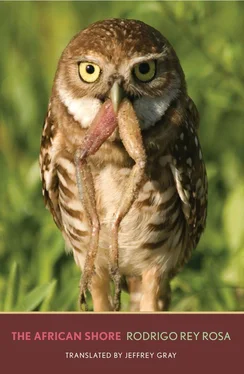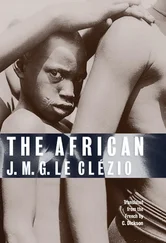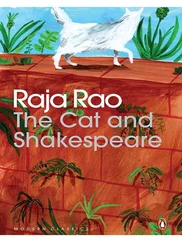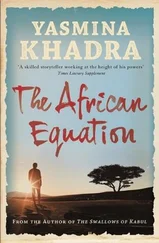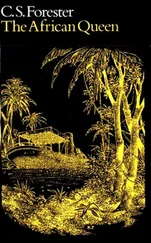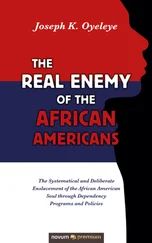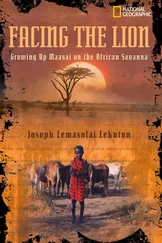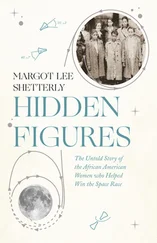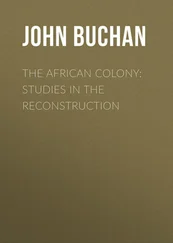“What’s the matter?” he said.
She had drawn back and looked alarmed.
There was a stain the size of a pea, of a ruddy grayish color, on one of his swarthy little sacks that seemed to breathe with its own life. In the center, where a hair was growing, was something that looked like pus.
Hamsa looked at it himself.
“That’s nothing,” he asserted, gruffly. “Come on, take off your clothes.”
“Hamsa, I’m sorry, really. You’ll hurt me with that.” In one jump, she had stood up.
“Come here,” said Hamsa, trying to grab her by the arm.
“Hamsa, I’m sorry, it’s not going to happen. Keep the owl. Excuse me, I’m going.”
“No!” Hamsa tried to grab her, but she slipped by.
At that moment the owl flew up and crashed through the cloth cover of the doorway, and the woman ran behind it, snatching her pullover and slippers as she moved.
Hamsa took a few steps outside the hut, half naked as he was, before stopping, clenching his fists, bitten with carnal pain.
The owl flew in a low circle around the corral and the shepherd’s hut, before heading toward the cliffs. It flew against a strong wind, skirting the crags, toward the darkest part of the afternoon. It saw two falcons at the entrance of their nests in the crevice of the rock face. It stopped to rest on the roof of a small pink cottage that perched on a cliff over the sea. The wind was too strong to keep flying against it. There were people in the cottage. The owl launched itself into the emptiness and flew with the wind toward the light, dying now where the earth ended and there was only sea. It retraced its flight past the shepherd’s hut, and, from on high, it could see the woman, who had put on her slippers and was walking hurriedly along the strip of grass bordering the asphalt road between the walls. The owl flew up as far as the summit and saw, in the distance, the glassy lights that lit up the hills, covered in a mantle of white houses fading into the folds of the parched and fissured countryside. It dipped down then, flying over the treetops toward a large abandoned house in the middle of a thick grove. It flew in through a window, greeted by the cries of the birds nesting there. It crossed through the house, flying from room to room through the hallways until it found an attic, with some roof tiles missing, the floorboards broken or completely rotten and a convenient cleft in the rough, dark wall.
p. 5 Aid el Kebir — Muslim holy day, when sheep are slaughtered en masse, commemorating Abraham’s willingness to sacrifice his son Isaac.
p. 5 Perdicaris — a rich Greek family, whose patriarch was kidnapped by Berbers in the early twentieth century.
p. 6 Yalatif —expression of despair, as in “God help us” or “My God!”
p. 7 gandura — hoodless, short-sleeved Moorish robe.
p. 8 Sidi Mesmudi — a religious sanctuary on Monte Viejo. (sidi: Sir, Lord.)
p. 10 Hamdul-láh —Praise be to Allah.
p. 10 Shaitán —Satan.
p. 16 motui —kif smoker’s kit, containing the sebsi or kif pipe.
p. 23 ouakha —all right.
p. 27 Skulls — this is the literal meaning of calaveras, the Spanish word used here.
p. 43 “nobody in his right mind. .”—common Moroccan belief.
p. 43 “Become who you are”—André Gide, Les nouvelle nourritures .
p. 43 Báraca l-láh u fik —God give you blessings.
p. 45 Djebel Musa — of the two pillars of Hercules, the one on the African shore; the other is Djebel Tarik (Arabic for Gibraltar).
p. 52 Polisario — the army in the old Spanish Sahara.
p. 60 attup —bear (Moroccan Arabic).
p. 61 B’slama —Goodbye (Moroccan Arabic).
p. 80 men were dogs — in the original Spanish, the word loosely translated here as “dogs” is calaveras, which literally means skulls but in Argentine slang refers to men devoted to pleasures of the flesh: playboys.
p. 81 nabula —kif container made of a sheep’s bladder.
p. 86 Maghrebi — Moroccan Arabic. (The Arab name for Morocco was El-Maghrib or Moghreb el aksa: the farthest west.)
p. 89 khay —brother (Moroccan Arabic).
p. 90 Intina yehudi! — You are a Jew (a curse, Moroccan Arabic).
p. 96 maquila —practice of producing goods in a zone outside of the goods’ trademark origin. (Cf. maquiladora, Mexican factories producing U.S. goods).
p. 127 casheb —a boy’s long shirt.
p. 129 Báraca —a blessing.
AFTERWORD BY JEFFREY GRAY. RODRIGO REY ROSA AND TANGIER
Most of Rodrigo Rey Rosa’s fifteen books of fiction are set in Guatemala; the exceptions are Ningún lugar sagrado (1998), a collection of nine short stories set in New York City; The Good Cripple (1996, translated into English in 2004), set in Guatemala and Morocco; Que me maten si. . (1996), set in Guatemala, London, and Paris; and this book, The African Shore (La orilla africana, 1999), Rey Rosa’s only novel set in Tangier.
To utter the word “Tangier” in a literary context is to invoke the American writer Paul Bowles, who lived in that city from the 1950s until his death in 1999, and who was Rey Rosa’s mentor and friend, his first translator into English, and of whose literary estate Rey Rosa is heir. Many writers visited or frequented Tangier — Truman Capote, Tennessee Williams, Djuna Barnes, Alan Sillitoe, Allen Ginsberg, William Burroughs, among them — but only Bowles settled there for a lifetime. (He had first visited Tangier, with Aaron Copland, in the 1930s on the suggestion of Gertrude Stein.) In the context of The African Shore, it is worth reminding ourselves of the Bowles — Rey Rosa relationship and its importance for both writers.
In “Bowles y yo” (a title that alludes to Bowles’s own “Bowles and It” as well as to Borges’s prose poem “Borges y yo”), Rey Rosa tells how, at twenty-one, he saw a poster in the hallway of the School of Visual Arts in New York City advertising a “workshop” in Tangier; he signed up, and with fifty other Americans, most of them New Yorkers and most of them two or three times his age, flew to Tangier to study with Bowles.
Bowles himself recalled that experience:
In the summer of 1980 I was conducting a workshop for “creative writing” at the American School of Tangier. The language used was English, since the students were Americans — with one exception. The youngest of the class was a Guatemalan, who wrote in Spanish. He had a fertile imagination, and used it to invent situations which were generally sinister. His texts were very short, often mere scenes or prose-poems of atmosphere, rather than tales, but all of them showed a power of invention capable of creating truly original situations.
During one of their earliest sessions, Bowles asked the class to name their favorite writers. When Rey Rosa mentioned Jorge Luis Borges, Bowles was pleased; he too had a predilection for Borges and had been the first to translate “The Circular Ruins” into English. After the session, Bowles told him he had traveled in Guatemala and knew Spanish, and advised Rey Rosa to write in Spanish thereafter. He also encouraged him to travel around Morocco; it wouldn’t hurt to miss a few workshops, he said, especially since the discussions with the other students, writing in English, probably wouldn’t be very helpful to his own work. Bowles lent him maps of northern Morocco to take with him, and Rey Rosa set off for the interior.
When Rey Rosa was about to return to New York, Bowles asked him if he would allow him to translate the stories (or prose poems) that the younger writer had handed in as coursework. A New York publisher (Red Ozier Press), specializing in “extravaganzas,” had asked Bowles for a book for its catalogue, but he didn’t have anything to send at the time. Could he translate Rey Rosa’s stories and submit them? Thus began their long collaboration — asymmetrical, Rey Rosa notes, “since the student’s translation of the master can’t be on the same level as the master’s translation of the student.” (Bowles translated Rey Rosa’s first three books, Dust on Her Tongue, The Beggar’s Knife, and The Pelcari Project; Rey Rosa translated into Spanish Bowles’s Too Far from Home, Points in Time, and Selected Stories, among others.)
Читать дальше
